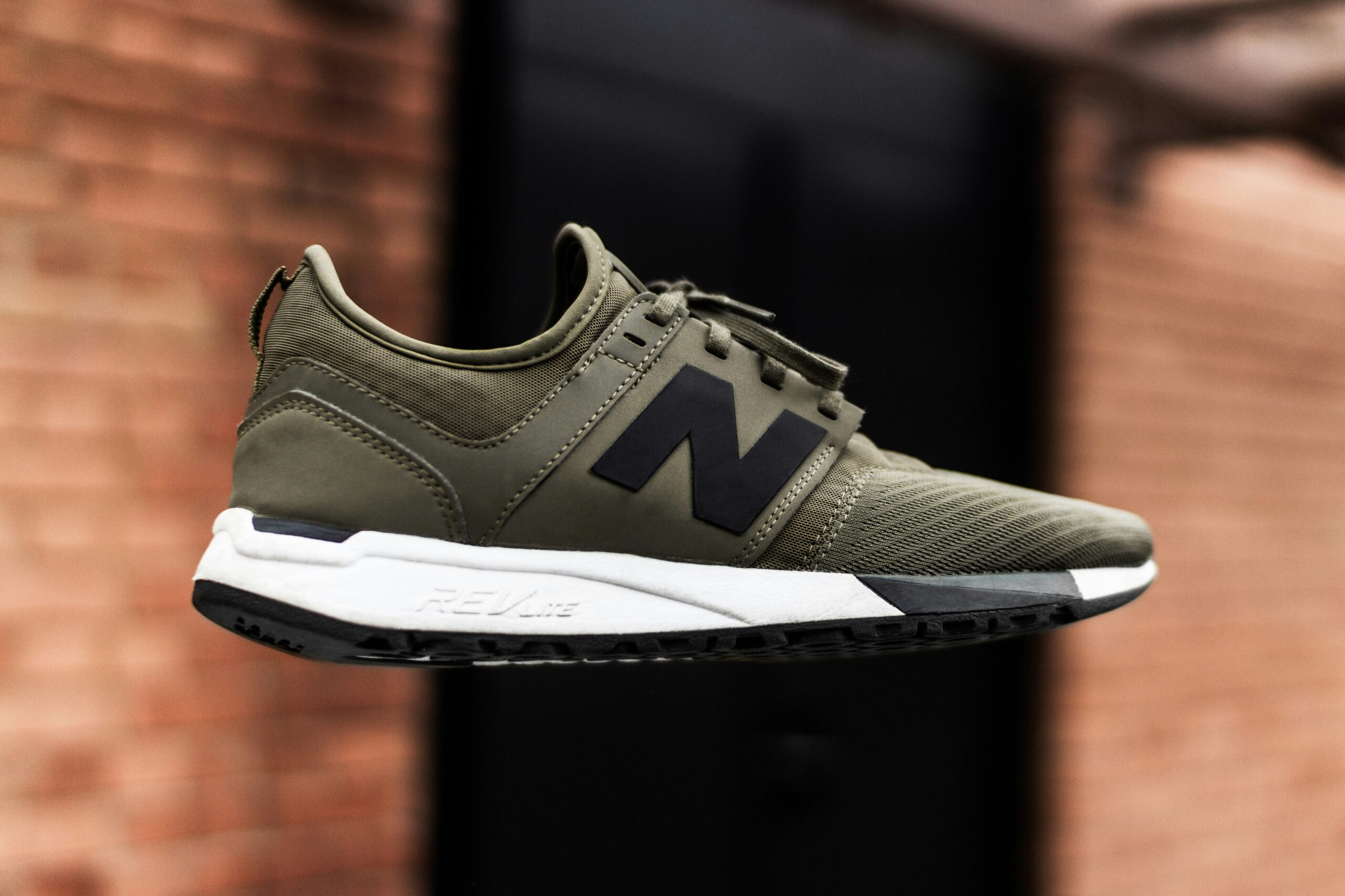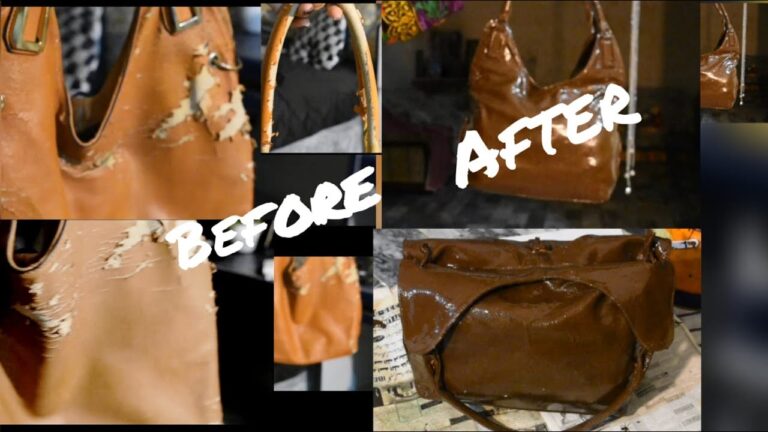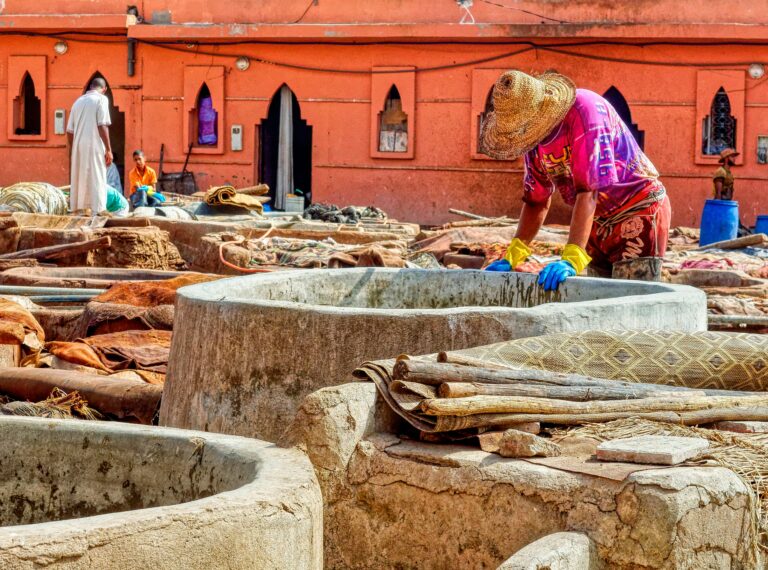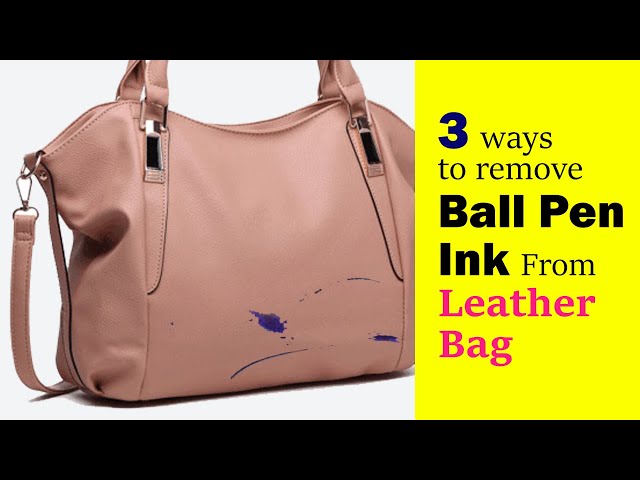Say Goodbye to Scuffs: Pro Tips for Leather Shoe Restoration
Removing Scuffs from Leather
Removing scuffs from leather can be a daunting task, but with the right techniques, you can restore your shoes to their former glory. Here we explore the effectiveness and potential risks of using two common methods: soap and water, and nail polish remover.
Soap and Water Risks
Using soap and water might seem like a simple solution for addressing scuffs on your leather shoes, but it is not always the best approach. For patent leather, in particular, soap and water can clean the shoes but are ineffective in removing scuff marks and might even cause damage to the delicate leather (Lifehacker).
Instead of soap and water, consider using a specialized leather cleaner that is formulated to remove dirt without harming the material. Always test any cleaner on a small, inconspicuous area first to make sure it doesn’t discolor or damage the leather. For more information on proper leather maintenance, read our guide on how to wash leather shoes.
Nail Polish Remover Effectiveness
Nail polish remover can be an effective solution for removing scuffs from patent leather shoes. According to Lifehacker, scrubbing the nail polish remover into the affected areas with a paper towel can make the scuff marks disappear. The recommended technique involves scrubbing across the line of the scuff marks perpendicularly for the best results.
| Method | Effectiveness | Recommended Use | Risks |
|---|---|---|---|
| Soap and Water | Low | General Cleaning | Potential Damage to Leather |
| Nail Polish Remover | High | Scuff Removal | Possible Discoloration |
When using nail polish remover, opt for one that is non-acetone to minimize the risk of damaging the leather. Also, always apply the remover to a paper towel or soft cloth rather than directly onto the shoe to control the amount used and prevent over-saturation.
For more tips on caring for leather and dealing with various types of damage, check out our article on how to get scratches out of leather.
Best Tools for Leather Care
Proper maintenance is essential to keep your leather shoes in pristine condition. Below, you’ll find a detailed guide on quality shoe care products and the correct cleaning techniques to help you say goodbye to scuffs.
Quality Shoe Care Products
Investing in high-quality products is crucial for preserving the longevity and appearance of your leather shoes. Products such as waterproof sprays, leather conditioners, and shoe polish can protect your footwear from water damage, prevent cracking, and preserve their original shine and color.
| Product Type | Purpose | Benefits |
|---|---|---|
| Waterproof Spray | Protects shoes from water damage | Prevents stains and water marks |
| Leather Conditioner | Moisturizes and softens leather | Prevents cracking and preserves suppleness |
| Shoe Polish | Adds shine and color to leather | Restores appearance and protects from scuffs |
| Suede Cleaner | Specific for suede material | Removes dirt and maintains texture |
| Shoe Cream | Restores color and luster | Suitable for minor scuffs and surface renewal |
For a comprehensive guide on maintaining leather shoes, refer to our article how to wash leather shoes.
Proper Cleaning Techniques
Effective cleaning methods are vital to maintaining the integrity of your leather shoes. Always start by removing any dirt or debris using a soft brush, followed by wiping down the shoe’s exterior with a damp cloth. Here’s a step-by-step guide to ensure thorough cleaning:
- Remove Surface Dirt: Use a soft brush to remove loose dirt and debris. This prevents scratches during the cleaning process.
- Clean with a Damp Cloth: Wipe the exterior with a damp cloth to remove any remaining dirt. For stubborn stains, use a specialized leather cleaner.
- Condition the Leather: Apply a leather conditioner evenly and let it absorb. This step is crucial for keeping the leather supple and preventing cracks.
- Polish the Shoes: Use a matching shoe polish to restore color and shine. Polish in a circular motion using a soft cloth.
- Dry Completely: Ensure the shoes are completely dry before storage to prevent mold and mildew. Use shoe trees or crumpled newspaper to maintain their shape during the drying process.
Regularly cleaning and conditioning your leather shoes can significantly extend their lifespan, as suggested by NuShoe.
For more information on maintaining other leather items, check out our articles on how to soften hard leather shoes and how to repair peeling faux leather bag.
Using the right tools and techniques will keep your leather shoes looking their best and extend their lifespan. To prevent and address odor issues, visit our section on how to remove smell from leather shoes.
Extending Shoe Lifespan
Ensuring your leather shoes last as long as possible involves understanding and implementing best practices for their care. This section covers the importance of rotating your shoes and the necessity of timely repairs and maintenance.
Shoe Rotation Importance
Rotating your shoes is critical for maintaining their durability and appearance. Wearing the same pair of shoes daily can cause excessive wear and tear, as well as the buildup of moisture and bacteria which can lead to odor and degradation of the leather. By regularly alternating between different pairs, you allow each pair to rest and air out between uses (NuShoe).
Benefits of Shoe Rotation:
- Reduced Wear and Tear: Alternating shoes limits the daily strain on any single pair, thereby extending their lifespan.
- Moisture Management: Provides time for shoes to dry out, reducing the risk of moisture damage and odor buildup.
- Structural Preservation: Helps maintain the shape and structural integrity of the shoes.
To learn more about maintaining leather items, refer to our guides on how to soften hard leather shoes and how to remove odor from leather shoes.
Timely Repairs and Maintenance
Addressing signs of wear and tear early can prevent further damage and maintain the structural integrity of your leather shoes. Common issues like worn-down soles, detached heels, damaged stitching, and cracked leather require prompt attention (NuShoe). Investing in quality shoe care products like waterproof sprays, leather conditioners, and shoe polish can also help protect your leather shoes from water damage, prevent cracking, and preserve their color and shine.
Key Maintenance Practices:
- Proper Cleaning: Use a damp cloth to wipe down the exterior of your shoes. For deeper cleaning, use specialized cleaners suitable for leather or suede (NuShoe).
- Timely Repairs: Address issues such as cracked leather, worn soles, or broken eyelets immediately to prevent further deterioration.
- Conditioning: Regularly apply leather conditioner to keep the material supple and prevent drying and cracking.
- Storage: Store shoes properly using a shoe tree or crumpled newspaper to maintain their shape. Ensure shoes are completely dry before storage to avoid mold growth (NuShoe).
| Maintenance Task | Frequency | Benefits |
|---|---|---|
| Cleaning | Weekly | Removes dirt, maintains appearance |
| Conditioning | Monthly | Keeps leather supple, prevents cracking |
| Repairs | As needed | Maintains structural integrity, prevents further damage |
| Shoe Rotation | Daily | Reduces wear, manages moisture |
For more information on leather care, check out our articles on how to wash leather shoes and how to get wrinkles out of leather. Proper care and timely maintenance ensure your leather shoes remain in excellent condition, providing comfort and style for years to come.
Mold Prevention and Treatment
When dealing with mold on leather shoes, it’s crucial to employ effective methods both for disinfecting and for preventing future occurrences.
Disinfecting Moldy Shoes
Removing mold from leather shoes not only restores their appearance but also prevents potential health issues such as toenail fungus (NuShoe Inspect & Correct). Below are some highly effective methods to disinfect moldy shoes:
Rubbing Alcohol and Isopropyl Alcohol:
- Mix equal parts of water and rubbing alcohol or isopropyl alcohol.
- Apply the solution to a cloth or cotton pad and gently rub the affected areas.
- Let the shoes air dry in a well-ventilated area.
Vinegar Solution:
- Mix one part vinegar with one part water.
- Use a cloth to apply the solution to the moldy spots.
- Allow the shoes to dry completely to prevent residual moisture from promoting further mold growth (NuShoe Inspect & Correct).
Saddle Soap:
- Saddle soap is an ideal option for cleaning mold-affected leather shoes without causing damage.
- Apply the saddle soap using a damp cloth and gently scrub the moldy areas.
- Wipe off any excess soap with another damp cloth and allow the shoes to dry (NuShoe Inspect & Correct).
Preventative Measures
Preventing mold on leather shoes requires consistent care and maintenance. Here are practical measures you can take to keep your shoes mold-free:
Proper Storage:
- Store your leather shoes in a cool, dry place.
- Avoid placing them in damp areas such as basements or unventilated closets.
Regular Cleaning:
- Clean your shoes regularly to remove dirt and moisture.
- Use appropriate leather care products to maintain their condition. For guidelines on how to wash leather shoes, refer to our comprehensive guide.
Ventilation:
- Ensure good air circulation around your stored shoes.
- Use shoe racks or storage solutions that allow for ventilation.
Conditions:
- Use a dehumidifier in areas where you store your leather shoes.
- Consider using silica gel packets within your shoe storage to absorb excess moisture.
By incorporating these strategies into your routine, you can effectively prevent mold growth and ensure your leather shoes remain in pristine condition. For further tips on maintaining leather items, explore articles such as how to get scuffs out of leather shoes and how to remove smell from leather shoes.
Dealing with Different Types of Damage
When it comes to how to get scuffs out of leather shoes, understanding the type of scuff is the first step in effectively addressing the damage. Material transfer scuffs and abrasive scuffs require different approaches for optimal results.
Material Transfer Scuffs
Material transfer scuffs on leather shoes occur when another object transfers material, such as rubber, onto the leather surface. These can often be removed using gentle, household methods without damaging the leather.
| Method | Tool Used | Effectiveness |
|---|---|---|
| Brush | Shoe Brush | High |
| Eraser | Pencil Eraser | Medium |
| Magic Eraser | Magic Eraser | High |
| Paste | Baking Soda Paste | Medium |
| Toothpaste | Non-Gel Toothpaste | Medium |
Before trying any of these methods, ensure that the tool and product used are not abrasive to avoid scratching the leather. Avoid using harsh chemicals like nail polish remover or rubbing alcohol to prevent leather damage (Samuel Hubbard).
Abrasive Scuffs Minimization
Abrasive scuffs are caused by friction, which can scrape off the leather’s top layer. Minimizing these scuffs involves both preventive measures and specific treatments.
Preventive Measures:
- Proper Storage: Store shoes in a dry, well-ventilated area to prevent material degradation.
- Protective Coating: Apply a leather protectant to create a barrier against scratches.
- Regular Maintenance: Clean leather shoes regularly to remove dirt and debris that can cause friction.
Treatment Techniques:
- Leather Conditioner: Apply a leather conditioner to nourish and restore the leather’s surface. See our section on leather conditioner application for detailed instructions.
- Shoe Creams and Polishes: Use a color-matched shoe cream or polish to fill in and mask minor scuffs.
- Gentle Buffing: Buff the affected area with a soft cloth to restore the shine.
Proper maintenance and timely interventions can greatly enhance the lifespan of your leather shoes. For more detailed guidelines on maintaining leather, visit our sections on how to get scratches out of leather and how to get oil out of leather shoes.
Repairing Deeper Damage
When it comes to addressing deeper damage on leather shoes, such as significant scratches and cuts, you’ll need to take a more thorough approach. Leather conditioner and specialized techniques can help restore the appearance and prolong the life of your footwear.
Leather Conditioner Application
Using a high-quality leather conditioner is essential for maintaining and restoring your shoes. Leather conditioner helps to nourish and rejuvenate the leather, making it more supple and better able to hide minor scratches.
Clean the Surface: Begin by wiping down the exterior of the shoes with a damp cloth to remove any dirt and debris. Ensure the shoes are completely dry before proceeding (NuShoe).
Apply the Conditioner: Apply a small amount of leather conditioner to a soft cloth. Using circular motions, gently rub the conditioner into the leather, paying special attention to the damaged areas. Allow the conditioner to penetrate the leather for about 15-20 minutes.
Buff the Leather: Once the conditioner has been absorbed, use a clean, dry cloth to buff the leather, removing any excess product. This process will help restore the leather’s natural shine and texture.
Repeat as Needed: Depending on the severity of the damage, you may need to repeat the conditioning process several times for optimal results.
For more tips on maintaining leather items, explore our guide on how to soften hard leather shoes.
Addressing Scratches and Cuts
Scratches and cuts on leather shoes can be challenging to repair, but with the right techniques, you can minimize their appearance and prevent further damage.
Identify the Damage: Assess the extent of the scratches and cuts to determine the best approach. Light scratches can often be treated with just conditioner and polish, while deeper cuts may require more intensive care (Samuel Hubbard).
Condition the Leather: Start with leather conditioner as outlined above to moisturize the leather and help it become more pliable.
Leather Filler for Deep Cuts: For deeper cuts, use a leather filler. Apply a small amount of filler to the cut, using a spatula or similar tool to smooth it out. Let the filler dry according to the product instructions.
Sand and Smooth: Once the filler is dry, gently sand the area with a fine-grit sandpaper to ensure it is smooth and level with the surrounding leather.
Reapply Conditioner and Polish: After addressing the deeper damage, reapply leather conditioner and buff the surface. Follow up with a matching leather polish to blend the repair with the rest of the shoe.
| Step | Action | Tools Needed |
|---|---|---|
| 1 | Clean the Surface | Damp Cloth |
| 2 | Apply Conditioner | Leather Conditioner, Soft Cloth |
| 3 | Buff the Leather | Dry Cloth |
| 4 | Apply Leather Filler (if needed) | Leather Filler, Spatula |
| 5 | Sand and Smooth | Fine-Grit Sandpaper |
| 6 | Reapply Conditioner and Polish | Leather Conditioner, Leather Polish, Buffing Cloth |
Investing in quality shoe care products and following these steps can help you restore your leather shoes to their former glory. For more insights on leather care, check out our other articles on topics like how to get scratches out of leather shoes and how to get scuffs out of leather shoes.







